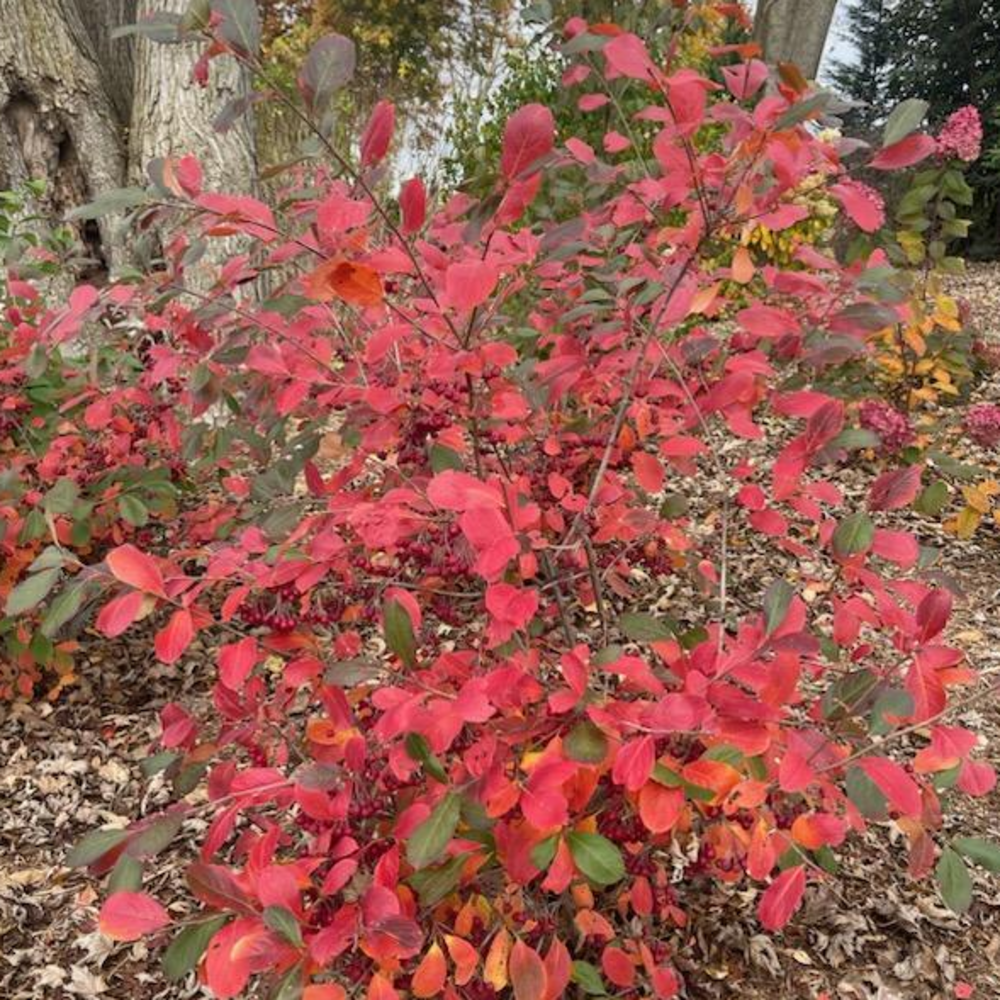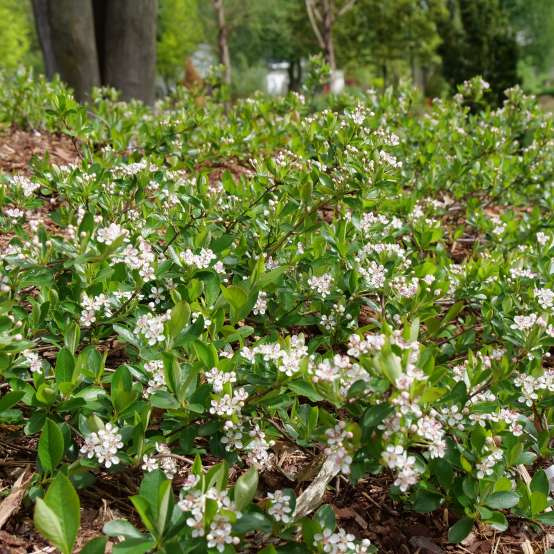Clicking the following controls will change the main image displayed above.

Meet the Breeder
Dr. Mark Brand
BERRY SCAPE®

Red aronia
Aronia arbutifolia
'UCONNAA001'
PP#36,882; CBRAF







- Heavy Flowering + Fruiting
- Multi-color Fruit + Fall Foliage
- Useful Habit
- Description
What’s better than a shrub that’s extremely durable and adaptable? A tough shrub that’s also colorful and visually captivating! Native from Ontario down to Texas, Berry Scape red aronia is tolerant of drought, heat, and salt and adapts to nearly any soil. In spring, an abundance of white flowers cover this shrub before changing to bead-like fruit that transition from yellow to orange to brilliant red. Red foliage accompanies the fruit for unforgettable fall interest. At just one-third the size of ‘Brilliantissima’ aronia, Berry Scape fits into many roles in gardens and landscapes. This remarkable shrub was developed by Dr. Mark Brand at the University of Connecticut.
- USDA Zone
- 4 - 9 (-30°F/-34.4°C)
- Exposure
- Full sun, Part sun
- Height
- 4-5'
- Width
- 4-5'
- Finish Time
- One season
- Type
- Deciduous
- Bloom Time
- Spring
- Flower Color
- White
- Foliage Color
- Green
- Liner Sizes
- 2 1/4", 4", Quick Turn
General Care
Soil
Adaptable to nearly all soils.Pruning
Blooms on old wood; however, pruning after bloom removes the potential for fruit to set, so pruning is best avoided unless you are selectively shaping the plant or removing dead or damaged wood.Uses
Hedges, specimen, edging, wildlife gardens, commercial landscapes.Growing Tips
Shade tolerant, but best flowering, fruiting, and fall color will occur with at least four hours of sun each day.Features: Alkaline soil, Attracts pollinators, Clay soil, Drought tolerant, Fall interest, Heat tolerant, Native, Salt tolerant
Filters: Botanical genus: Aronia, Common name: Red aronia, Retail program: Proven Winners® ColorChoice®, USDA Zone 4, USDA Zone 5, USDA Zone 6, USDA Zone 7, USDA Zone 8, Exposure: Full sun, Exposure: Part sun, Bloom time: Spring, White flowers, Green foliage
Features: Alkaline soil, Attracts pollinators, Clay soil, Drought tolerant, Fall interest, Heat tolerant, Native, Salt tolerant
Filters: Botanical genus: Aronia, Common name: Red aronia, Retail program: Proven Winners® ColorChoice®, USDA Zone 4, USDA Zone 5, USDA Zone 6, USDA Zone 7, USDA Zone 8, Exposure: Full sun, Exposure: Part sun, Bloom time: Spring, White flowers, Green foliage








